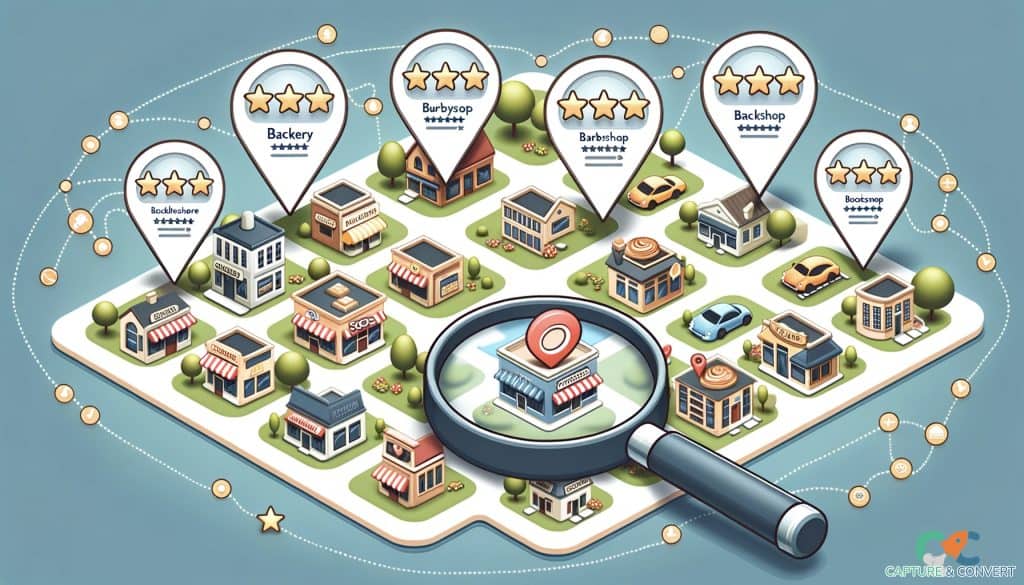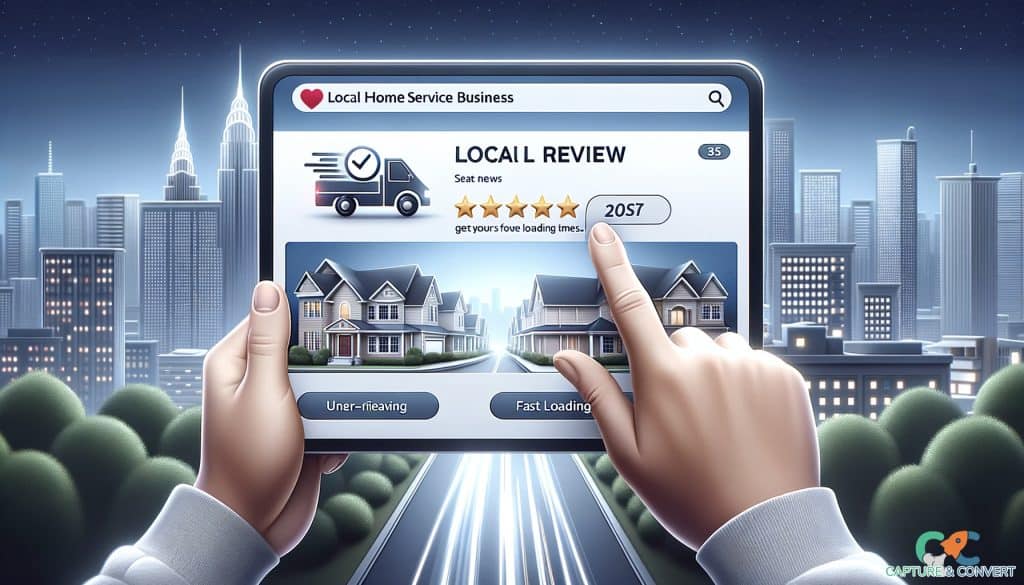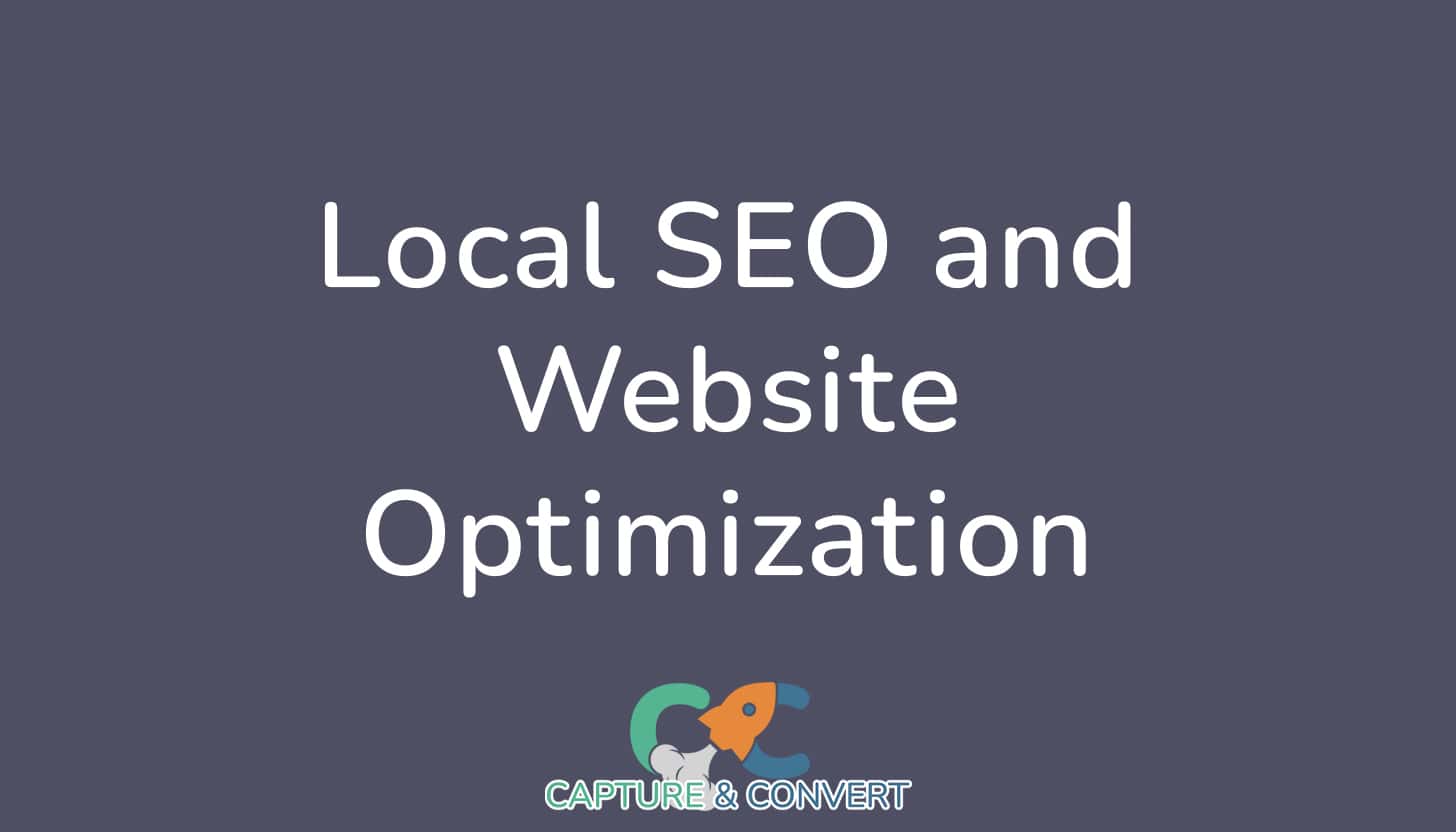Discover the power of local SEO and its role in driving organic traffic. Master the strategies to optimize your website for local searches and stand out in your community.
Local SEO, or search engine optimization, is the art of enhancing your online presence in a way that makes your business more visible to local customers when they search for products or services.
The power of local SEO lies in its ability to drive organic traffic to your website, ultimately helping you generate leads and stand out in your community.
In this article, we'll delve into 10 essential strategies that will not only optimize your website for local searches but also help you dominate the Search Engine Results Pages (SERPs).
Contents
- Importance of Local SEO for Local Businesses
- 1. Keyword Research and Optimization for Local Terms
- 2. NAP Consistency
- 3. Local Citations and Directory Listings
- 4. Optimizing Meta Tags and Descriptions
- 5. Local Link Building
- 6. Creating Local Content
- 7. Mobile Optimization
- 8. Schema Markup for Local SEO
- 9. Embedding Google Maps on Your Website
- 10. Optimizing for Voice Search
- Common Pitfalls to Avoid in Local SEO
- Differences Between Local and General SEO
- User Experience's Role in Local SEO
- Tools for Monitoring Local SEO Performance
- Frequency of Updating Local SEO Strategies
- Cost of Local SEO
Importance of Local SEO for Local Businesses

Local SEO is the digital key that unlocks the door to success for local businesses.
Local SEO ensures your business is seen by people in your immediate vicinity generating local traffic which often leads to higher conversion rates as it attracts people actively seeking your products or services.
Deploying an effective SEO strategy that makes your website rank high helps you stand out against your local competitors in the digital space and build trust and credibility among potential customers.
Local SEO is also a cost-effective way to market your business to a relevant audience, has a very high ROI and is a strategy sustainable in the long term.
Benefits
Listed below are 9 benefits of local SEO for businesses.
- Enhanced Online Visibility: Make it easier for potential customers to find your business online.
- Increased Website Traffic: Boost visits to your website by appearing in relevant local searches.
- Improved Lead Generation: Elevate chances of attracting and converting potential clients.
- Boosted Reputation and Credibility: High-ranking businesses are often perceived as more trustworthy and credible.
- Enhanced User Experience: Local SEO tends to guide the development of more user-friendly websites.
- Cost-Effective Marketing: Often more budget-friendly compared to traditional advertising methods.
- Higher Return on Investment (ROI): Efficiently utilizes budget for greater customer reach and acquisition.
- Long-Lasting Benefits: Unlike some marketing strategies, local SEO can provide sustained advantages.
- Community Engagement: Being visible in local searches can foster a sense of community engagement and loyalty.
Drawbacks
Listed below are 6 drawbacks of local SEO for businesses.
- Time-Consuming: Achieving and maintaining rankings, especially in competitive markets, can require a significant time investment.
- Continuous Adaptation: Search engine algorithms change frequently, requiring ongoing strategy adjustments.
- Investment in Resources:
- Tools: Utilizing specialized SEO tools might require budget allocation.
- Content: Producing consistent and high-quality content can be resource-intensive.
- Professional Expertise: Hiring SEO experts or consultants may be necessary for optimal results.
- Fluctuating Results: Even with effort and investment, SEO doesn’t guarantee immediate or consistent results.
- Vulnerable to Competitors’ Actions: Competitors' local SEO strategies might directly impact your rankings and visibility.
- Dependence on Search Engine Platforms: Local SEO is contingent on search engine platforms and their evolving policies and algorithms.

These points encompass some challenges and considerations that businesses might face while implementing local SEO strategies, highlighting the importance of a well-thought-out approach.
Listed below are 10 key strategies to master local SEO for SERP domination as business.
- Keyword Research and Optimization for Local Terms
- NAP Consistency
- Local Citations and Directory Listings
- Optimizing Meta Tags and Descriptions
- Local Link Building
- Creating Local Content
- Mobile Optimization
- Schema Markup for Local SEO
- Embedding Google Maps on Your Website
- Optimizing for Voice Search
1. Keyword Research and Optimization for Local Terms

Keyword research and optimization for local terms is of paramount importance in any SEO strategy aimed at generating local leads.
This aspect serves as the compass guiding your online presence toward local success.
The use of selected keywords that resonate with the terms used by a target audience is essential to increase the visibility and rankings of a website in SERP (Search Engine Page Results).
This not only increases your visibility but also connects you with potential customers actively seeking the products or services you offer in your community.
Through meticulous keyword research and optimization, you can tailor your content to address the unique needs and preferences of your local audience, significantly enhancing your lead generation efforts and ultimately driving more conversions from local customers.
The lists below gives an overview of the process and tools needed for a solid SEO strategy.
Keyword Research Tools
- Google Keyword Planner: Utilize this free tool to identify relevant local keywords and phrases. It provides insights into search volume, competition, and keyword suggestions.
- Ahrefs: A powerful SEO tool that offers keyword research features, including keyword difficulty analysis and competitor research, to help you identify valuable local keywords.
- SEMrush: This all-in-one SEO platform provides comprehensive keyword research capabilities, including local keyword tracking and competitive analysis.
Local Keyword Generation Techniques
- Location-Based Keywords: Incorporate specific locations into your keywords to target local audiences effectively. For example, "plumber in [city]" or "best pizza [neighborhood]."
- Long-Tail Keywords: Focus on long-tail keywords that are more specific and reflective of user intent. These often convert better for local businesses.
- Competitor Analysis: Study the keywords your local competitors are targeting to identify opportunities and gaps in your strategy.
Local SEO Tools
- Google Business Profile (GBP): Optimize your GBP listing by filling in all the relevant details, including accurate NAP (Name, Address, Phone Number) data and local keywords.
- Yoast SEO for WordPress: If your website is on WordPress, the Yoast SEO plugin can help optimize your content for local keywords.
- Local Rank Tracking Tools: Tools like Moz Local and BrightLocal can help you monitor your local search rankings and track your progress.
Once you've identified these keywords, seamlessly integrate them into your website content in the form of a blog, but avoiding keyword stuffing which might penalize the whole website.
2. NAP Consistency

Ensuring consistent NAP (Name, Address, Phone Number) data is paramount for a successful local SEO strategy.
Inconsistent NAP information can perplex search engines and potential customers, potentially leading to lower local search rankings.
Furthermore, such discrepancies can erode trust in your business, emphasizing the need for meticulous attention to NAP consistency in your online presence.
The following list explains 12 practices to ensure NAP consistency and improve SEO.
- Standardize Your Information: Start by standardizing your business's NAP details. Ensure that your name, address, and phone number are consistent across all digital platforms.
- Use the Same Format: Consistently format your NAP information. For instance, if your address includes "Street" instead of "St.," make sure this format is used consistently everywhere.
- Check for Accuracy: Regularly review your NAP information to ensure it's accurate and up-to-date. Any changes in business details, such as a new address or phone number, should be promptly updated across all platforms.
- Claim and Verify Listings: Claim your business listings on major search engines like Google, Bing, and Yahoo, as well as on popular directories like Yelp and Yellow Pages. Verify these listings to gain control over your business information.
- Audit Existing Listings: Perform a thorough audit of your existing online listings to identify any inconsistencies or inaccuracies. This can be a time-consuming task but is essential for maintaining NAP consistency.
- Local Citations: Ensure your business information is consistent on local citation websites. These are online platforms where your business's NAP data is mentioned, such as on review sites, local business directories, and social media platforms.
- Google Business Profile: Pay special attention to your GBP listing. Google heavily relies on GBP information for local search results, so make sure it accurately reflects your business's NAP details.
- Sync with Your Website: Your website should display your NAP information consistently with what's listed on external platforms. Use schema markup to provide search engines with structured data, making it easier for them to understand your NAP details.
- Monitor and Update: Continuously monitor your NAP data across all platforms. Whenever you make changes, ensure they are updated promptly to maintain consistency.
- Professional Help: If you have a large online presence and numerous listings, consider using professional tools or services to manage and maintain your NAP consistency efficiently.
- Customer Feedback: Encourage customers to provide feedback regarding any discrepancies they encounter in your NAP data. This can help you identify and rectify issues more quickly.
- Document Your NAP Details: Keep a documented record of your business's NAP information, making it easily accessible for updates and reference.
3. Local Citations and Directory Listings

The digital equivalent of placing signposts, local citations and directory listings play a pivotal role in improving your online visibility, a crucial aspect of successful local SEO.
Listed below are 5 tips to harness the power of local citations and directory listings as local business.
- Strategies: Develop a proactive strategy for acquiring and maintaining accurate directory information. This may involve seeking out reputable local directories, submitting consistent NAP data, and optimizing your listings with relevant keywords and details.
- Leverage Industry-Specific Directories: Explore industry-specific directories that cater to your niche or sector. Being listed in directories relevant to your business can further boost your credibility and attract highly targeted local customers.
- Customer Reviews and Ratings: Encourage satisfied customers to leave positive reviews and ratings on your directory listings. Positive feedback not only enhances your reputation but also influences potential customers' decisions.
- Local Citation Audit: Conduct regular audits of your local citations to identify and correct any inconsistencies or inaccuracies. A thorough audit ensures that your NAP data remains consistent across all listings, enhancing trust and search engine rankings.
- Monitoring and Updates: To ensure the continued accuracy and effectiveness of your directory listings, establish a routine for monitoring and updating them. Changes in your business information, such as address or phone number updates, should be promptly reflected across all listings.
4. Optimizing Meta Tags and Descriptions

Optimizing meta tags and descriptions is a critical aspect of local SEO, as they serve as the first impression of your website in search results.
Ensure your meta tags and descriptions effectively resonate with local audiences and boost click-through rates.
Listed below are 5 strategies that help to optimize meta tags and descriptions properly.
- Tailor for Local Audience: When customizing meta tags and descriptions for your local audience, consider using location-specific keywords that resonate with your target demographic. Addressing specific local needs or preferences in your content can help create a stronger connection with potential customers.
- Local Relevance: To emphasize local relevance in metadata, think beyond just keywords. Highlight your local affiliations, community involvement, or any special offers tailored to local customers. This can instill a sense of trust and community engagement, making your business more attractive to local searchers.
- Compelling Descriptions: Crafting compelling meta descriptions goes beyond mere summarization. Use persuasive language that not only describes your content but also invokes curiosity or a sense of urgency. For instance, highlight limited-time offers, promotions, or unique selling points that set your business apart.
- Keyword Integration: Integrating local keywords naturally into your meta tags and descriptions is crucial. Ensure that these keywords seamlessly fit within the content and make sense to the reader. Avoid keyword stuffing, as it can result in a poor user experience and potentially harm your SEO rankings.
- Highlight Local Benefits: In your meta descriptions, explicitly mention the local benefits of your products or services. Whether it's fast delivery, convenient location, or personalized service, conveying these advantages can entice local users to click through to your website.
5. Local Link Building

Backlink building, also known as link building, is a strategic process in search engine optimization (SEO) that involves acquiring hyperlinks from other websites to your own.
These hyperlinks, known as backlinks or inbound links, serve as pathways that connect one website to another.
Listed below are 6 benefits of building local backlinks for local business websites.
- Improved Local Visibility: Local link building helps SMBs establish a strong online presence within their community. When local websites, directories, and influencers link to your business, it signals to search engines that your business is relevant to the local area, potentially leading to higher local search rankings.
- Increased Local Authority: Earning local backlinks from reputable sources in your area can enhance your business's authority and credibility. Local customers are more likely to trust and choose a business that has local endorsements and mentions.
- Targeted Traffic: Local links bring highly targeted traffic to your website. Since these links often come from local sources or directories, the visitors they attract are more likely to be interested in your products or services, increasing the likelihood of conversion.
- Community Engagement: Engaging in local link building often involves connecting with local businesses, organizations, and influencers. This can foster relationships within your community, leading to potential collaborations, partnerships, and increased brand recognition.
- Boosted Offline Traffic: Local link building efforts can also drive foot traffic to your physical location, particularly for brick-and-mortar businesses. When local websites and directories include your business information, it becomes easier for potential customers to find and visit your store.
- Enhanced Brand Visibility: Gaining mentions and backlinks from local sources can significantly improve your brand's visibility within the local community. This increased exposure can lead to word-of-mouth referrals and further establish your business as a local authority.
6. Creating Local Content

Creating local content is paramount for businesses with a localized focus.
It serves as a bridge between your business and the local audience, forging connections, building trust, and enhancing visibility in local search results.
Local content's significance lies in its ability to cater directly to the unique interests, concerns, and needs of your local audience, making it more engaging and relatable.
Furthermore, it plays a pivotal role in local SEO, bolstering your website's presence in local search results and enabling you to reach potential customers in your vicinity.
Simultaneously, crafting local content establishes your business as a trusted authority within the community, and by showcasing your commitment to the local area, it nurtures trust and loyalty among your local customer base.
Listed below are 10 content strategies that are helpful for local businesses.
- Local News and Events: Cover local news, events, and developments related to your industry or niche. Attend and report on local events, or create event listings on your website.
- Local Stories and Profiles: Share success stories of local customers or partners. Interview local influencers, business owners, or community leaders to showcase their perspectives.
- Local Guides and Directories: Create guides or directories specific to your location. This could include "Best Restaurants in [Your City]" or "Top Things to Do in [Your Area]."
- Local Reviews and Testimonials: Encourage customers to leave reviews and testimonials on your website. Highlight these to showcase your positive impact within the local community.
- Local Keyword Optimization: Use local keywords naturally within your content, including city or neighborhood names. This helps improve your local search rankings.
- Community Involvement: Share information about your involvement in local charities, events, or sponsorships. Highlight your commitment to the community.
- Local Content Calendar: Create a content calendar that includes local holidays, events, and seasons. Plan content around these themes to stay relevant.
- User-Generated Content: Encourage customers to share their experiences with your business on social media. Share user-generated content (with permission) to foster community engagement.
- Local Social Media Engagement: Actively engage with your local audience on social media platforms. Respond to comments and messages promptly.
- Local Partnerships: Collaborate with local businesses or organizations on content initiatives. This can expand your reach and enhance your local credibility.
7. Mobile Optimization

Recognizing the importance of mobile SEO in local search and user experience is paramount for businesses in today's digital landscape.
With a significant portion of internet traffic originating from mobile devices, businesses must prioritize mobile optimization to cater to the needs and preferences of mobile users.
Listed below are 6 aspects of mobile SEO that play an important role for optimizing websites.
- Responsive Design: Implement a responsive web design that adapts seamlessly to various screen sizes and devices, ensuring a consistent user experience across mobile and desktop platforms.
- Fast Loading Speed: Optimize your website's loading speed for mobile users by minimizing large images and unnecessary scripts, enabling faster access to content.
- Mobile-Friendly Navigation: Simplify navigation by using mobile-friendly menus, clear call-to-action buttons, and intuitive user interfaces that enhance the mobile user experience.
- Content Prioritization: Prioritize content for mobile users by placing essential information, such as contact details and location, prominently on mobile pages.
- Optimize Images and Media: Compress images and utilize responsive media formats to reduce load times and maintain high-quality visuals on mobile devices.
- Optimize for Results: To maximize the benefits of a mobile-friendly design, it's crucial to regularly monitor mobile traffic through analytics tools. Analyze user behavior, identify pain points, and make necessary adjustments to improve the mobile user experience and drive better results.
8. Schema Markup for Local SEO

Schema markup for local SEO is a structured data markup language that provides search engines with specific information about a web page's content, making it easier for search engines to understand and display relevant information in search results.
Its importance lies in enhancing the visibility of local businesses in search results, improving user experience, and increasing click-through rates.
The basic concept behind schema markup is to provide search engines with structured data that can be used to generate rich snippets, knowledge panels, and other search result enhancements, which can make your business stand out in local searches.
Listed below are 6 tips to deploy a schema markup strategy for websites properly.
- Identify Relevant Schema Types: Determine the most appropriate schema types for your business, such as LocalBusiness, Organization, or Event, based on the nature of your content.
- Add Schema Markup Code: Insert the schema markup code into your HTML. You can do this manually or use online schema generators to create the code.
- Provide Accurate Information: Fill in the schema markup fields with accurate and detailed information about your business, including name, address, phone number, business hours, and any other relevant details.
- Test with Structured Data Testing Tools: Use Google's Structured Data Testing Tool or other structured data testing tools to verify that your markup is error-free and displays the desired information.
- Submit to Search Engines: Once validated, submit your schema markup to search engines like Google using Google Search Console's structured data report or other relevant tools.
9. Embedding Google Maps on Your Website

Providing customers with accurate geographic information is of paramount importance.
Google Maps plays a pivotal role in SEO by providing users with location-based search results and helping businesses improve their online visibility.
When businesses optimize for Google Maps, they increase their chances of appearing in local search results, driving foot traffic, and attracting customers actively seeking products or services in their area.
Follow the 7 steps in the following list for a seamless integration of Google Maps into your website.
- Claim Your GBP Listing: Begin by claiming or creating your Google Business Profile listing, providing accurate and comprehensive information about your business.
- Optimize GBP Listing: Fill out all available fields, including business name, address, phone number (NAP data), hours of operation, website URL, and a brief description of your business.
- Add High-Quality Images: Include high-quality images of your business, products, and services to make your GBP listing more appealing and informative.
- Collect and Respond to Reviews: Encourage customers to leave reviews on your GBP listing and respond to them promptly, as positive reviews can boost your credibility.
- Create Localized Content: Develop content that emphasizes local relevance and keywords to enhance your presence in local searches.
- Embed Google Maps: Embed Google Maps on your website's contact or location pages, making it easier for visitors to find your physical location.
- Regularly Update Information: Keep your GBP listing up to date by promptly reflecting any changes in your business, such as new locations, updated hours, or services.
10. Optimizing for Voice Search

The growing trend of voice search has significant implications for local businesses, as it changes the way customers seek information and interact with search engines.
Testing and refining voice search optimization techniques are crucial. Regularly monitor voice search performance and adapt your strategy based on user behavior and evolving voice search trends.
Listed below are 6 tips to optimize websites for voice search.
- Local Keyword Research: Conduct research to identify conversational and natural-sounding local keywords that mirror how people speak.
- Local Content Optimization: Create content that answers local questions and provides solutions to common local problems.
- Structured Data Markup: Implement structured data markup, such as schema.org, to provide context and structured information that voice assistants can easily understand.
- Mobile Optimization: Ensure your website is mobile-friendly, as many voice searches occur on mobile devices.
- Claim and Optimize GBP: Ensure your Google Business Profile listing is claimed, complete, and accurately reflects your business information.
- Local Reviews and Ratings: Encourage and manage customer reviews and ratings, as they play a role in voice search results.
Common Pitfalls to Avoid in Local SEO

When it comes to local SEO, there are several common pitfalls that local businesses should avoid to maximize their online presence and attract local customers effectively.
The following list includes 10 of the most common pitfalls and the reasons behind them.
- Ignoring Mobile Optimization: Businesses may overlook mobile optimization due to outdated website designs or a lack of awareness regarding the growing importance of mobile traffic.
- Inconsistent NAP Data: Inaccurate NAP data can stem from outdated business information, insufficient attention to directory listings, or a lack of regular updates.
- Overlooking GBP: Some businesses may not realize the significance of Google Business Profile, while others might face challenges in claiming or optimizing their listings.
- Neglecting Online Reviews: Businesses may not actively manage reviews due to a lack of resources or a failure to recognize the impact of reviews on their reputation.
- Keyword Stuffing: The desire to rank high in local search results can lead businesses to overuse keywords, thinking it will boost their rankings.
- Ignoring Local Link Building: Lack of awareness about the importance of local link building or limited outreach efforts can result in missed opportunities.
- Forgetting About Voice Search: Businesses may not keep up with emerging technology trends or underestimate the prevalence of voice search.
- Lack of Consistent Content: Businesses may struggle to maintain a consistent content strategy due to resource constraints or a lack of understanding about what resonates with local audiences.
- Ignoring Analytics: Some businesses may not prioritize analytics due to limited knowledge or resources for data analysis.
- Ignoring Competitors: Failure to monitor competitors may occur when businesses are solely focused on their own strategies or underestimate the competitive landscape in their local market.
Differences Between Local and General SEO
Local SEO and general SEO share common principles but differ in their focus and objectives.
Local SEO aims to connect businesses with local customers and focuses on location-based optimization, whereas general SEO seeks to reach a broader, often global, audience without a location-specific emphasis.
The following table compares the main differences between local SEO and general SEO.
| Feature | Local SEO | General SEO |
|---|---|---|
| Geographic Focus | Targets a specific geographic area or location, such as a city or region. | Aims to reach a broader, often global, audience without a specific geographic focus. |
| Keyword Targeting | Emphasizes location-based keywords, e.g., "dentist in [city]" or "coffee shop near me". | Targets broader, non-location-specific keywords to reach a wider audience. |
| Google Business Profile | Requires a strong presence on Google Business Profile, with accurate NAP data, reviews, and local optimization. | Does not necessarily rely on GBP, focusing more on website optimization. |
| Content Focus | Creates content tailored to local interests, events, and news relevant to the target area. | Focuses on creating content that appeals to a broader, often industry-specific, audience. |
| Backlink Strategies | Prioritizes local backlinks from sources within the target location, such as local directories. | Seeks high-quality backlinks from a wide range of authoritative sources, regardless of location. |
| Citations and Reviews | Values online citations and online reviews to establish local credibility. | Gives less weight to citations and reviews unless they impact the business's industry directly. |
| Local Directories | Focuses on getting listed in local directories and review platforms specific to the target location. | May not prioritize local directories unless they provide industry-specific value. |
| Local Link Building | Engages in local link building through collaborations and partnerships with local businesses. | Engages in broader link-building strategies, potentially with national or international partners. |
| Mobile Optimization | Places a strong emphasis on mobile optimization due to the prevalence of local searches on mobile devices. | Also prioritizes mobile optimization but may not focus exclusively on local mobile search trends. |
| Searcher Intent | Recognizes the immediate intent of searchers to find local businesses or information. | Addresses a wide range of searcher intents, including informational, transactional, and navigational. |
While local SEO and general SEO share fundamental SEO principles, their strategies and tactics diverge to cater to specific geographic audiences and objectives.
The difference in focus and goals between local SEO and general SEO significantly influences the formulation of tailored and effective optimization strategies.
Current Relevance
Local SEO is far from dead for businesses; in fact, it remains a vital and thriving strategy.
As search engines continuously evolve and prioritize user intent and local relevance, the importance of local SEO has only grown.
Local SEO offers businesses the opportunity to connect with their immediate community and reach potential customers actively seeking local products and services.
While it may require adaptation and a deep understanding of local optimization techniques, it continues to yield valuable results for businesses aiming to enhance their local online presence.
Learning Curve
Local SEO can be challenging to master as a business owner, especially if you are unfamiliar with its intricacies and nuances.
The complexities of local search algorithms, the need for consistent NAP data, local content creation, and the ever-changing landscape of online reviews can be overwhelming for those without prior experience in SEO.
Additionally, staying updated with the latest trends and best practices in local SEO can be time-consuming.
However, with dedication, learning, and the right guidance or professional assistance, business owners can navigate and effectively leverage local SEO to their advantage.
So, while it may be challenging, it is certainly achievable with the right resources and commitment.
User Experience's Role in Local SEO

User experience (UX) plays a crucial role in local SEO as it directly impacts how potential customers interact with your website and business information.
Listed below are 7 ways user experience impacts on SEO.
- Improved Visibility: Search engines consider user behavior as a ranking factor. A positive UX, characterized by fast loading times, mobile responsiveness, and user-friendly navigation, can lead to longer dwell times on your website. This, in turn, signals to search engines that your site provides a valuable experience, potentially improving your local search rankings.
- Lower Bounce Rates: A well-designed and intuitive website with relevant content reduces bounce rates, indicating that users find your site engaging and informative. Lower bounce rates are associated with higher search engine rankings.
- Mobile Optimization: With the increasing prevalence of mobile search, having a mobile-friendly website is critical for local SEO. A mobile-optimized site ensures that users can access your information easily on smartphones and tablets, enhancing their experience and your chances of appearing in local mobile search results.
- Local Citations: Accurate and consistent NAP (Name, Address, Phone Number) data across the web, often found on business directories and listings, is crucial for local SEO. A seamless UX ensures that users can access this information without frustration, helping to maintain consistent data and build trust with both users and search engines.
- Reviews and Ratings: Positive reviews and ratings contribute to a favorable online reputation and customer trust. A website that encourages and showcases these reviews in an organized and user-friendly manner can enhance user perception, potentially leading to increased local search visibility.
- Local Engagement: A user-friendly website can facilitate user engagement, such as form submissions, newsletter sign-ups, or appointment bookings. These actions can provide valuable data for local SEO and help convert online traffic into offline customers.
- Content Relevance: UX extends to the content on your website. Content that addresses local concerns, questions, and interests is more likely to resonate with users and keep them engaged. This can contribute to higher rankings in local search results.
Tools for Monitoring Local SEO Performance
Monitoring local SEO performance is crucial to track the effectiveness of your optimization efforts and identify areas for improvement.
Several tools can assist in this process, each serving specific tasks.
The following list contains 10 important tools to monitor local SEO performance as a business.
- Google Analytics: Google Analytics provides valuable insights into website traffic, user behavior, and the sources of your online visitors.
- Google Search Console: This tool provides data on how Googlebot views and interacts with your website.
- GBP Insights: If you have a Google Business Profile listing, GBP Insights offers data on how users find your business on Google.
- Moz Local: Moz Local is a tool designed for managing local listings and citations.
- SEMrush: SEMrush offers comprehensive SEO analytics, including local SEO tracking.
- BrightLocal: BrightLocal is a specialized local SEO tool that offers local rank tracking, citation management, and reputation monitoring.
- Ahrefs: While known for its backlink analysis capabilities, Ahrefs also provides valuable local SEO insights.
- Yext: Yext is a platform for managing local listings and data across various directories, websites, and apps.
- ReviewTrackers: ReviewTrackers aggregates and tracks reviews from various platforms, helping you manage your online reputation effectively.
- Local SEO Rank Trackers: Tools like Rank Ranger, Whitespark, and Local Falcon are specialized rank tracking tools that focus on local search rankings.
Make sure to also check out our article on the best SEO tools for local businesses to get more information about some of the tools mentioned above.
Frequency of Updating Local SEO Strategies

The frequency of updating your local SEO strategies depends on various factors, including ongoing monitoring, algorithm changes, and competitive analysis.
Regularly monitor key performance metrics like organic traffic and keyword rankings, and adapt promptly to algorithm updates and shifts in customer behavior.
Seasonal adjustments may be necessary for businesses with fluctuating demand.
Stay informed about changes in Google Business Profile and adjust your strategies accordingly.
Keep local content up-to-date with relevant news and events, and continually pursue local link-building opportunities.
Actively manage online reviews and maintain NAP consistency.
Ensure your website remains mobile-friendly and responsive by periodically testing its performance on various devices and browsers.
In essence, the frequency of updates varies, but a proactive and adaptive approach is crucial for maintaining effective local SEO aligned with your business goals.
Cost of Local SEO
The cost of local SEO for businesses is variable and depends on several factors.
Primarily, it hinges on the chosen strategies and tools, encompassing on-page optimization, content creation, link building, and more, each with associated costs.
Furthermore, the geographical area plays a significant role, as businesses in highly competitive urban centers may face higher expenses compared to those in less competitive rural areas.
Another factor affecting cost is the decision to manage SEO in-house or outsource it, with internal management potentially incurring hidden expenses like staff salaries and training, while outsourcing can offer more predictable pricing tailored to business goals and needs.
Therefore, businesses should consider their specific circumstances and budget when determining the most cost-effective local SEO approach.

